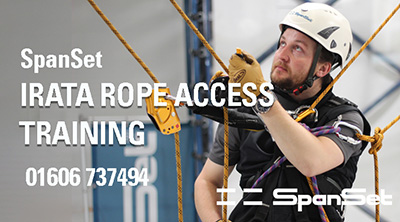You are using an out of date browser. It may not display this or other websites correctly.
You should upgrade or use an alternative browser.
You should upgrade or use an alternative browser.
helmet mounted cave mapping system?
- Thread starter richardg
- Start date
cap n chris
Well-known member
Although it's not helmet mounted, it's the next best thing in terms of mapping a cave as you travel through it; distances, heights and width are occasionally prone to exaggeration, admittedly, but left/right/up/down is usually spot on. Accessing the data will be dependent upon the quality of the brain in use. Refer to manual.

Joe.Bones
Member
martinr said:One like this?
You mean a holy hand grenade?
Roger W
Well-known member
Are you thinking of some sort of 3D laser scanning system?
I get the impression that they can give fantastic results, but are very expensive and also somewhat too heavy for helmet mounting.
A quick google came up with these people:
http://www.lasersurvey.co.uk/
but I've no idea what sort of equipment they use.
This one: http://www.scantech-international.com/ - led me to
http://hds.leica-geosystems.com/en/5574.htm
which weighs in at 16kg with another 12 kg for the power supply.
How strong is your neck?
I get the impression that they can give fantastic results, but are very expensive and also somewhat too heavy for helmet mounting.
A quick google came up with these people:
http://www.lasersurvey.co.uk/
but I've no idea what sort of equipment they use.
This one: http://www.scantech-international.com/ - led me to
http://hds.leica-geosystems.com/en/5574.htm
which weighs in at 16kg with another 12 kg for the power supply.
How strong is your neck?
graham
New member
The kit used by the Nottingham Caves Project fits in a couple of cycle tow carts. It's a long way from being helmet mounted.
ChrisJC
Well-known member
I did give this some thought quite recently, and my investigations showed that the only way to keep a track of where you have gone is with an accelerometer. The difficulty is that even with the best small accelerometers, the cumulative error (you have to integrate twice to get distance) will make the whole thing a waste of time very quickly.
Chris.
Chris.
JasonC
Well-known member
I have absolutely no personal knowledge of this, but there is a large community dedicated to hacking Nintendo Wiis and getting them to do interesting and unexpected things.
This http://www.slashgear.com/wii-hack-creates-3d-virtual-reality-head-tracking-system-099545/ is sort of in the area asked about - I guess a Wii could be used as the basis for such a device.
The beauty of them of course is the built-in accelerometers.
I suspect the location-tracking might not be that accurate over larger distances, but maybe it has potential for a quick low- to medium-grade survey ?
Just a thought...
This http://www.slashgear.com/wii-hack-creates-3d-virtual-reality-head-tracking-system-099545/ is sort of in the area asked about - I guess a Wii could be used as the basis for such a device.
The beauty of them of course is the built-in accelerometers.
I suspect the location-tracking might not be that accurate over larger distances, but maybe it has potential for a quick low- to medium-grade survey ?
Just a thought...
We are a fair way from the genuine 'magic helmet-mount surveyor', but there is steady progress in this direction so I have reason to believe it may become practical quite soon and maybe even affordable and useful a few years after that.
The kinetic games thingy is actually quite a useful surevyor - it's already been used for office surveys. It has limited range (about 5 metres), will quickly go off track, and a has a somewhat limited cone of view that works well in square corridors but will probably miss a lot of cave features unless you go forward and backwards, but as a way of filling in shape around an existing survey it's very good.
Anna Mason did an MSc on using video plus film tracking software to generate underground surveys and essentially showed that it could be done with expensive cameras/lights and software. http://www.soi.city.ac.uk/~dmm/research/pubs/2008-MasonA-gisruk.pdf] [url]http://www.soi.city.ac.uk/~dmm/research/pubs/2008-MasonA-gisruk.pdf[/url] Working out how to do this to adeqaute quality using cheap cameras/lights and software would be a very fruitful area of research - I'm pretty sure it could be done. Again, this technique probably still needs a centreline to work on for good-enough accuracy, although it can in theory gfenerate it's own if you just stick identifiable markers on the wall somehow.
Meanwhile people are doing a lot of accelerometer and computer vision mapping work. I'ts quite true that accelerometers we can afford have apalling accuracy and will drift completely out of whack in about 5 seconds, but you can do things to dramatically improve this. Someone at a talk I went to found that attaching one to the foot works wonders, because it stops every time to put the foot down for a step - this allows a calibration (detecting zero vertical momement and very little forward movement) every couple of seconds. That probably still works underground most of the time. Caving has an advanatage over most uses of this tech, in that it is easy for us to stop, put the magic box down and let it recalibrate to 'still'. This is the only way that cheap inertial tech is going to be any use anytime soon.
The kinetic games thingy is actually quite a useful surevyor - it's already been used for office surveys. It has limited range (about 5 metres), will quickly go off track, and a has a somewhat limited cone of view that works well in square corridors but will probably miss a lot of cave features unless you go forward and backwards, but as a way of filling in shape around an existing survey it's very good.
Anna Mason did an MSc on using video plus film tracking software to generate underground surveys and essentially showed that it could be done with expensive cameras/lights and software. http://www.soi.city.ac.uk/~dmm/research/pubs/2008-MasonA-gisruk.pdf] [url]http://www.soi.city.ac.uk/~dmm/research/pubs/2008-MasonA-gisruk.pdf[/url] Working out how to do this to adeqaute quality using cheap cameras/lights and software would be a very fruitful area of research - I'm pretty sure it could be done. Again, this technique probably still needs a centreline to work on for good-enough accuracy, although it can in theory gfenerate it's own if you just stick identifiable markers on the wall somehow.
Meanwhile people are doing a lot of accelerometer and computer vision mapping work. I'ts quite true that accelerometers we can afford have apalling accuracy and will drift completely out of whack in about 5 seconds, but you can do things to dramatically improve this. Someone at a talk I went to found that attaching one to the foot works wonders, because it stops every time to put the foot down for a step - this allows a calibration (detecting zero vertical momement and very little forward movement) every couple of seconds. That probably still works underground most of the time. Caving has an advanatage over most uses of this tech, in that it is easy for us to stop, put the magic box down and let it recalibrate to 'still'. This is the only way that cheap inertial tech is going to be any use anytime soon.
TheBitterEnd
Well-known member
I did some trials of using optical flow to measure distance travelled and whilst it worked well in natural light on surfaces with a reasonable degree of contrast, on limestone there are areas of rock with little contrast which confuse the optical flow software. The other issue is deep shadow - this appears as high contrast but as the light moves, the shadow "moves" giving a false amount of movement.
As far as accelerometers go, as ChrisJC said, it's the double integration that kills it (integrate once for velocity, again for displacement). You can do an easy and quite enlightening experiment - generate a column of random numbers between -1 and 1 in a spreadsheet so that the sum of the column is about zero. In the next column integrate (i.e. add the numbers in the first column) in the third column integrate again. With 20-30 values you will find that the third column runs off to some large value. The point of this is that the slightest amount of noise (from even the best accelerometers) will eventually be amplified into big errors.
One approach that I think may have some mileage is profile comparison (there was a link to a paper somewhere on this forum where this approach had been used with a submersible in a sump). What I mean by "profile comparison" is that you have two sets of sensors, one a fixed distance behind the other, that measure the profile of the passage. It is then possible to match the two profiles and determine the distance travelled. The obvious problem with this approach is that as the operator twists and turns, the rear set of sensors will be at a different angle to the profile than the front set of sensors were when they passed the same point. However it may be possible to use gyros to compensate for this...
As far as accelerometers go, as ChrisJC said, it's the double integration that kills it (integrate once for velocity, again for displacement). You can do an easy and quite enlightening experiment - generate a column of random numbers between -1 and 1 in a spreadsheet so that the sum of the column is about zero. In the next column integrate (i.e. add the numbers in the first column) in the third column integrate again. With 20-30 values you will find that the third column runs off to some large value. The point of this is that the slightest amount of noise (from even the best accelerometers) will eventually be amplified into big errors.
One approach that I think may have some mileage is profile comparison (there was a link to a paper somewhere on this forum where this approach had been used with a submersible in a sump). What I mean by "profile comparison" is that you have two sets of sensors, one a fixed distance behind the other, that measure the profile of the passage. It is then possible to match the two profiles and determine the distance travelled. The obvious problem with this approach is that as the operator twists and turns, the rear set of sensors will be at a different angle to the profile than the front set of sensors were when they passed the same point. However it may be possible to use gyros to compensate for this...
kdxn
New member
Helmet mounted lasers have been around in a few forms to measure stuff.
See this which is a mini laser scanner and accelerometer package
http://www.newscientist.com/data/images/ns/cms/dn14888/dn14888-2_250.jpg
which has been super-upgraded for corridor mapping for the military but not exactly cave proof (yet)
http://www-video.eecs.berkeley.edu/research/indoor/
also this which had a problem that the head was not really steady enough for single shots
http://www.chaos.org.uk/survex/cp/CP17/IMG00185.GIF
The MS Kinect is useful for lots and lots of small ranges but it requires a tactical grade inertial solution to hang it all together and therein lies the issue - anything that good tends to have serious export restrictions and cost a lot. One way to address this is to use commercial grade 9DOF sensors, do 'zero-update' stops at stations going in and also on the way out plus do some laser ranges between stations to help calibrate and then shove it all through a kalman filter afterwards. A true north seeking gyro instead of magnetic would also be a great addition and there has been a lot of R+D in this area for gaming and mobile devices. New video camera technology such as the recent low-light white pixel addition announced by Sony will be useful to a system for profiling using an offset projected light and for capturing colour information and 3D photogrammetric measurement - perhaps three overlapping camera sensors on fixed baseline(s) with a 9DOF sensor package and a Disto ?
A cave proof system will take some time.
See this which is a mini laser scanner and accelerometer package
http://www.newscientist.com/data/images/ns/cms/dn14888/dn14888-2_250.jpg
which has been super-upgraded for corridor mapping for the military but not exactly cave proof (yet)
http://www-video.eecs.berkeley.edu/research/indoor/
also this which had a problem that the head was not really steady enough for single shots
http://www.chaos.org.uk/survex/cp/CP17/IMG00185.GIF
The MS Kinect is useful for lots and lots of small ranges but it requires a tactical grade inertial solution to hang it all together and therein lies the issue - anything that good tends to have serious export restrictions and cost a lot. One way to address this is to use commercial grade 9DOF sensors, do 'zero-update' stops at stations going in and also on the way out plus do some laser ranges between stations to help calibrate and then shove it all through a kalman filter afterwards. A true north seeking gyro instead of magnetic would also be a great addition and there has been a lot of R+D in this area for gaming and mobile devices. New video camera technology such as the recent low-light white pixel addition announced by Sony will be useful to a system for profiling using an offset projected light and for capturing colour information and 3D photogrammetric measurement - perhaps three overlapping camera sensors on fixed baseline(s) with a 9DOF sensor package and a Disto ?
A cave proof system will take some time.
TheBitterEnd
Well-known member
Obviously it depends on the desired accuracy but if you move away from completely mobile to fixing things then some fixed lighting would (probably) be enough to get the optical flow solution working.
The other alternative with fixed things is cave GPS using 4 molephones placed on the surface before entering the cave
The other alternative with fixed things is cave GPS using 4 molephones placed on the surface before entering the cave
Subpopulus Hibernia
Active member
I understand the divers in Pozo Azul used some kind of automatic surveying device to map the cave as they explored it. I gather it worked quite well.
What sort of system was that?
What sort of system was that?
graham
New member
Subpopulus Hibernia said:I understand the divers in Pozo Azul used some kind of automatic surveying device to map the cave as they explored it. I gather it worked quite well.
What sort of system was that?
That sounds like Jon Volanthen's "Lazy Boy" sump mapper which uses flow rates to gauge length and a depth gauge for, errm, depth. Plus a compass of course.
Subpopulus Hibernia
Active member
I'd imagine that that device could only be used in relatively static sumps so that the actual flow of the water wouldn't throw off the length reading.
RobinGriffiths
Well-known member
You can either use a dead reckoning system which is prone to cummulative errors as you go - as Chris suggests, or to have a system where you are able to compute position realtive to a known reference frame. Maybe have multiple surface magnetic transponders sending timing information which are detected and compared by your helmet unit in an analogous manner to gps maybe ?
Robin
Robin
graham
New member
Subpopulus Hibernia said:I'd imagine that that device could only be used in relatively static sumps so that the actual flow of the water wouldn't throw off the length reading.
It has to be calibrated and so works best in sumps of a relatively uniform size.


